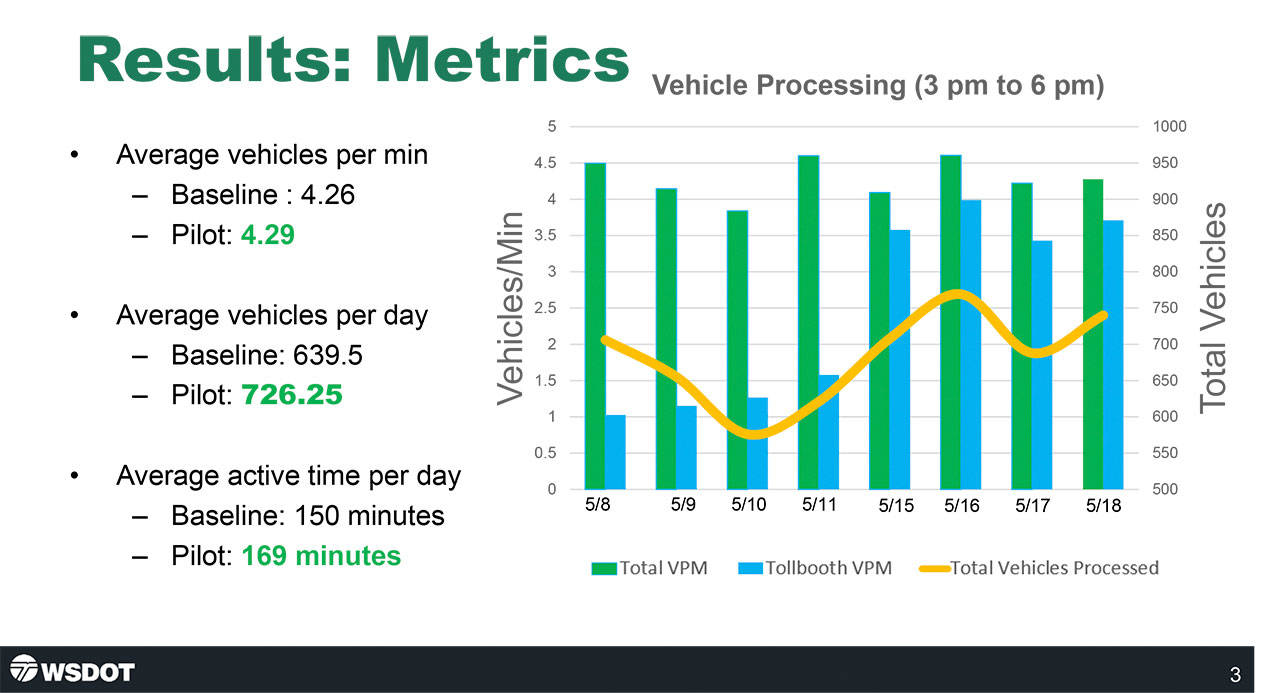Later this month, the ferry system will implement loading measures that it recently tested as a pilot program in an effort to improve traffic flow at the Fauntleroy ferry dock during the summer months.
Washington State Ferries (WSF) tried out the plan for four days in May, and officials have evaluated the results against baseline data since then. Brian Mannion, a WSF communications manager, said last week that looking at peak travel times — from 3 p.m. to 6 p.m. during the week — loading with the new procedures was more efficient than current procedures.
“The big takeaway is that during the pilot, we were able to move an average of 85 more cars per three-hour period compared to baseline data every day,” he said.
The plan calls for a ferry worker to serve as a “splitter” at the end of the dock. That person will keep the area in front of the tollbooths clear and allow the police officer to go farther up the line of cars waiting to direct drivers. Once on the dock, all drivers will stop at a tollbooth to purchase or redeem tickets. In turn, they will be given a receipt and a “destination card,” indicating whether they are going to Vashon or Southworth. Additionally, both booths will be open to all vehicles more than they currently are. No changes are in store for motorcycles, vanpools and carpools, which should continue to use the exit lanes as usual.
When WSF implements the new plan, it will provide extra staff for ongoing monitoring, training and evaluation for at least 30 days, Mannion added.
He noted that the new loading procedures change traffic flow. Under the current system, the dock is active — with cars moving on it and tickets being read — 150 minutes out of those three hours. Under the pilot, active time increased to 169 minutes.
For those waiting in line, this change translates into more consistent, but slow, movement toward the dock, compared to a longer time parked and then quick progress forward. He added that the WSF has received both positive and negative comments about that change.
Especially significant is that the pilot measures reduced the number of empty spaces overall, including on the worst-affected sailings. However, Mannion added that some empty spots have appeared on sailings that previously did not have any — a situation WSF officials believe they can address with improvements to the new system. He also cautioned that the pilot was short, and that Ferries considers the data from it to be preliminary.
Greg Beardsley, the head of the Vashon Ferry Advisory Committee and a member of the Triangle Improvement Task Force, which came up with the plan, said he believes the changes will provide some benefits. But as he and ferry officials have said repeatedly, the Fauntleroy dock is too small to adequately serve the route — and any improvements will be incremental.
“There is no fix that is going to rush a lot of cars onto the dock to fill every boat,” Beardsley said.
He noted that the problems involved are complex and beyond what most people consider while they are waiting in a long line of vehicles. Both he and Mannion asked for patience, as staff and passengers learn new procedures.
Looking to find potential mid- and long-range avenues for improvement, the task force will soon begin examining the schedule and possibly adjust it “with the goals of filling the boats and getting people where they need to go,” Mannion said.



